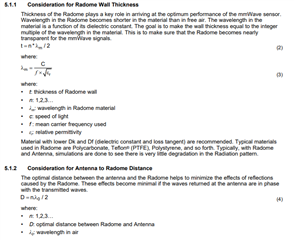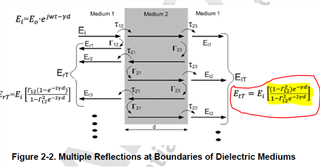Other Parts Discussed in Thread: IWR6843, IWR1642,
Hi,
I'm working on design of radome for both IWR6843 and IWR1642
I refer TI document(spracg5).

Q1. As a result of the search, it was confirmed that the center frequency was used.
Can I use the center frequency of the frequency width I use for radome calculations?
(ex, my configuration of bandwidth is 2GHz at IWR6843, than f = 61GHz)
Q2. Polycarbonate or Teflon are being considered as radome materials, but their dielectric constant can't be found at 60 GHz and 77 GHz.
Can I get the dielectric constant of polycarbonate and teflon at 60 GHz and 77GHz?
Q3. I know Rectangular radomes can have losses in directions other than the boresight. Is there a formula to find out how much this loss is?
Q4. Where is the boresight of radar? Is the Tx antenna the reference or the middle of the whole antenna?
Q5. Can I get references for designing a curved (half spherical) based radome to reduce losses?
Thanks.



